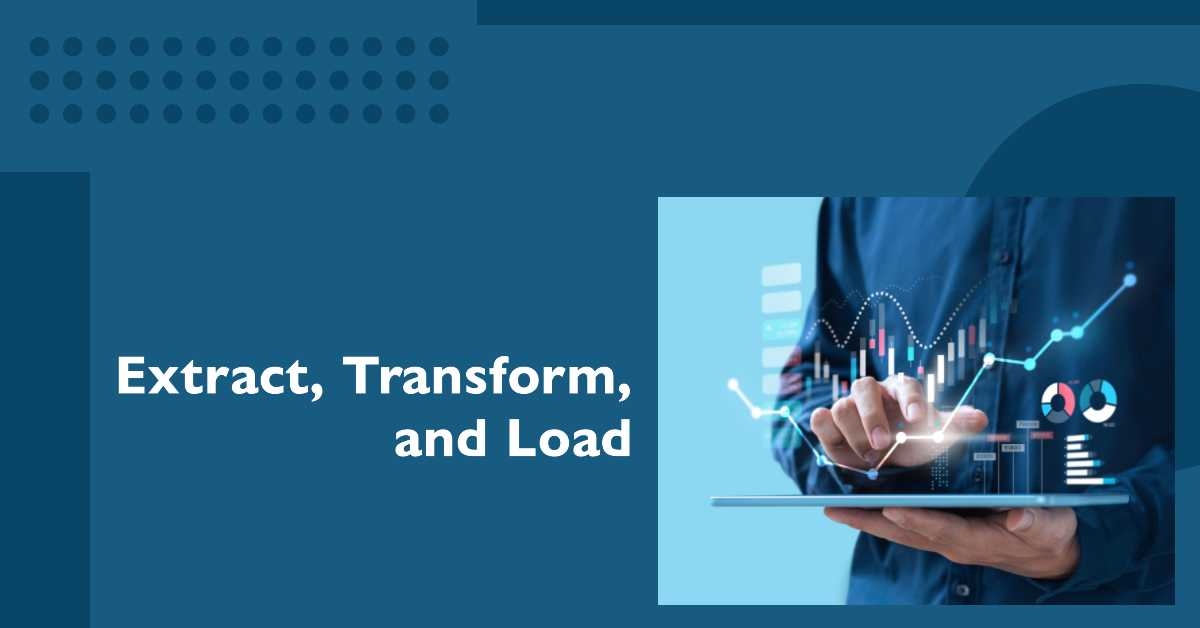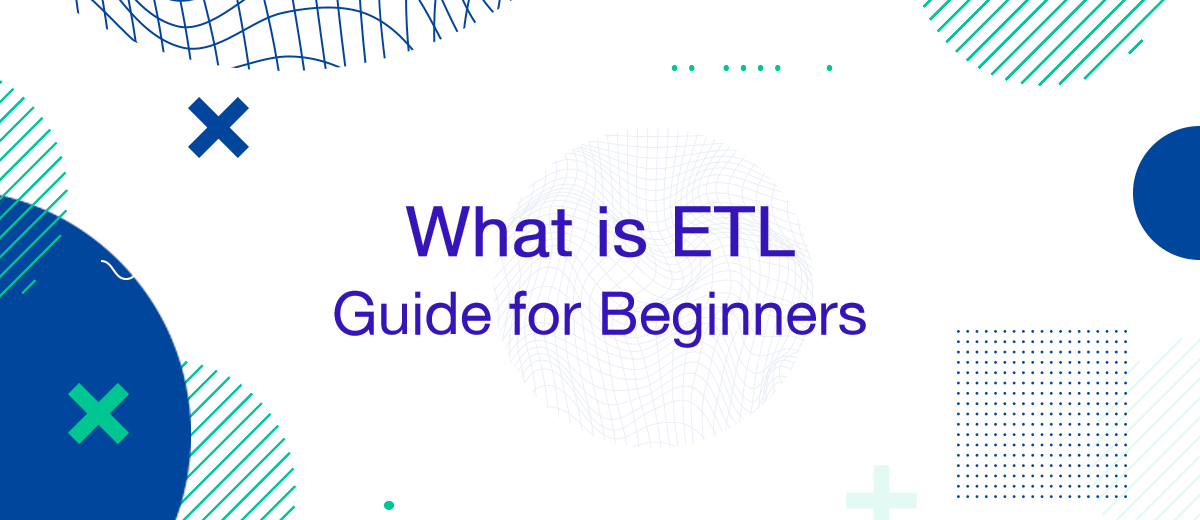In the age of big data, understanding and managing data has become a top priority for businesses across all industries. The ability to extract, transform, and load data — commonly known as ETL — has become a critical skill. This process not only aids in the systematic collection and organization of data, but also facilitates valuable insights, aiding in strategic decision-making. In this guide, we'll explore the intricacies of ETL, delving into its workings, benefits, and contrasting it with ELT.
What is ETL, and How Does ETL Work?
ETL stands for Extract, Transform, and Load, a process that is fundamental to data warehousing. Let's break down each component of this acronym to better understand its meaning and role in data management.
Extraction
The first step in the ETL process is extraction, where data is collected from various source systems. These systems can range from traditional databases, such as MySQL or SQL Server, to modern cloud-based storage systems, like Amazon S3 or Google Cloud Storage. The data may also come in various formats — structured data like CSV files, semi-structured data like JSON, or unstructured data like emails or documents.
The main challenge during this step is to ensure that the extracted data maintains its original integrity, meaning it's accurate and complete. Moreover, the extraction should be performed in a way that doesn't impact the performance of the source systems.
Transformation
Once the data is extracted, it moves to the transformation stage. This is where the raw data is cleansed and converted into a format that can be easily analyzed.
The transformation process may include a variety of operations, such as:
- Cleaning: Removing inconsistencies, duplicates, or errors in the data.
- Standardizing: Converting data to a common format or unit.
- Enriching: Enhancing the data with additional information.
- Validating: Checking if the data meets certain criteria or rules.
- Aggregating: Summarizing or grouping the data for further analysis.
The goal is to ensure that the data is accurate, consistent, and in a suitable format for analysis or reporting.
Loading
The final step is loading the transformed data into a target system — typically a data warehouse or a large database that serves as a centralized repository of a company's data. Depending on the specific requirements, the loading process can happen in real-time (as soon as the data is transformed) or in batches (at scheduled intervals).
It's important to note that the ETL process is cyclical — as new data comes in, it goes through the same ETL process to ensure that the data warehouse is always up-to-date.
In conclusion, the ETL process provides a systematic approach to moving and transforming data, making it a critical component of any business's data strategy. As data volumes continue to grow, understanding and efficiently managing the ETL process becomes increasingly important. Big data development services can significantly enhance the ETL process by providing advanced tools and techniques to handle the increasing volume and complexity of data.
Benefits of ETL

ETL processes bring a multitude of benefits to organizations, particularly in an era where data-driven decision making has become a key determinant of business success. Here are some of the main advantages:
- Data Integration: ETL tools enable businesses to integrate data from multiple, often disparate, sources, providing a unified view of the data. This is particularly important for businesses that rely on various systems for their operations and need a consolidated view for analysis and reporting.
- Improved Data Quality and Consistency: The transformation step in ETL helps improve data quality by cleaning up inconsistencies, removing duplicates, and ensuring data conforms to certain standards. This results in more accurate and reliable data, leading to better business decisions.
- Enhanced Business Intelligence: By consolidating and organizing data into a single, unified source, ETL processes significantly enhance business intelligence efforts. Analysts can run queries on the data warehouse to retrieve insights that can inform strategic business decisions.
- Time and Resource Efficiency: Automating the ETL process saves significant time and resources. Instead of manually collecting, cleaning, and loading data, businesses can automate these processes, allowing their teams to focus on analyzing the data and deriving insights.
- Historical Data Analysis: ETL processes make it possible to store large amounts of historical data in an organized manner. This allows businesses to perform trend analysis and make predictions about future performance based on past data.
- Regulatory Compliance: Many industries are subject to regulations that require them to maintain accurate and consistent data. The transformation step in ETL helps businesses comply with these regulations by ensuring that data is standardized and clean.
In conclusion, ETL processes, when effectively implemented, can lead to significant improvements in business intelligence, operational efficiency, and overall decision-making processes within an organization.
Additionally, data room companies can help you to provide numerous benefits for ETL processes, including secure data management, and streamlined workflows.
ETL Tools
ETL tools are software applications that enable and streamline the ETL process. They are designed to extract, transform, and load data from various sources into a data warehouse. These tools can handle large volumes of data and automate a significant part of the ETL process, making them an integral part of many organizations' data strategies. Here are a few popular ETL tools:
Informatica PowerCenter
Informatica PowerCenter is a widely-used ETL tool known for its robust data integration capabilities. It supports a large number of source systems and provides a graphical interface for designing ETL processes.
Microsoft SQL Server Integration Services (SSIS)
SSIS is a versatile ETL tool that integrates well with other Microsoft products. It's particularly beneficial for organizations that already use a Microsoft-based tech stack.
Talend
Talend is an open-source ETL tool that offers both free and paid versions. It supports a wide variety of source and target systems and is recognized for its user-friendly interface and extensive community support.
IBM InfoSphere DataStage
DataStage is a part of IBM's InfoSphere suite. It's known for its high performance and scalability, making it suitable for large enterprises with complex ETL needs.
Oracle Data Integrator (ODI)
ODI is a comprehensive data integration tool from Oracle. It's particularly beneficial for organizations that use other Oracle products, like Oracle Database or Oracle Business Intelligence.


AWS Glue
AWS Glue is a fully managed ETL service that makes it easy to move data between data stores on the Amazon Web Services (AWS) platform. It's a good fit for organizations with cloud-based infrastructures.
Choosing the right ETL tool depends on various factors, including the complexity and volume of your data, your tech stack, budget, and specific ETL requirements. It's important to thoroughly evaluate different options before making a decision.
ETL vs ELT
While ETL (Extract, Transform, Load) is a common process for data integration and management, there's another similar acronym in the data world: ELT (Extract, Load, Transform). Although they may seem similar, the order of operations and the emphasis each approach places on different steps have significant implications.
ETL (Extract, Transform, Load)
As we've already discussed, ETL first extracts data from various sources, then transforms the data (cleansing, standardizing, aggregating, etc.) before loading it into a data warehouse. This approach ensures that only clean, relevant, and useful data enters the data warehouse. It’s particularly suitable when:
- You have predefined schemas and know exactly what your data structure should look like.
- You're dealing with a traditional relational database management system.
- You're working with small to medium-sized data sets.
ELT (Extract, Load, Transform)
ELT, on the other hand, extracts data from the source systems and loads it into the data warehouse without initially applying any transformations. Once the data is in the warehouse, it's then transformed as needed for analysis. This approach is gaining popularity due to the rise of big data and cloud-based data warehouses that can handle large volumes of data and provide powerful computation capabilities. It might be more suitable when:
- You're dealing with large volumes of data.
- You're using a data lake or a modern data warehouse that can handle raw, unstructured, or semi-structured data.
- You don't have a predefined schema, or it's subject to changes.
The choice between ETL and ELT largely depends on your specific requirements, such as the size and complexity of your data, your data storage and processing capabilities, and the flexibility you need in your data schema. Both processes have their strengths and can be effectively used in different scenarios. It's important to evaluate your needs and resources carefully to choose the right approach for your data management strategy.
Implementing ETL in Your Organization
Implementing ETL in an organization is a substantial task that requires careful planning, strategic decision-making, and technical expertise. Here are some steps to guide you through this process.
1. Understand Your Data
Start by getting a solid understanding of the data you have. Identify the data sources, understand the data formats, and assess the quality and relevance of the data for your business needs. This step will help you determine the complexity of the ETL process you need to set up.
2. Define Your Goals
What do you want to achieve with your ETL process? Are you trying to improve your data quality, integrate data from multiple sources, or speed up data analysis? Defining clear goals will help guide the ETL implementation process and allow you to measure its success.
3. Choose the Right ETL Tools
There's a wide range of ETL tools available in the market, each with its strengths and limitations. As we've discussed before, your choice of tool should depend on your specific requirements such as data volume, complexity, budget, and technical capabilities.
4. Design the ETL Process
Design your ETL process based on your understanding of the data and your goals. This includes designing data mappings from the source to the target systems, defining data transformations, and setting up schedules for data extraction and loading.
5. Implement and Test
Once you've designed the ETL process, it's time to implement it using your chosen ETL tool. After implementation, thorough testing is crucial to ensure that the process works as expected and that the data in the target system is accurate and consistent.
6. Monitor and Optimize
After your ETL process is up and running, ongoing monitoring is essential to ensure it continues to operate efficiently and correctly. You may also need to continuously optimize your ETL process as your data and business needs evolve.
Implementing ETL in your organization can be a complex task, but the benefits it can bring in terms of improved data quality and availability, enhanced decision-making, and increased operational efficiency make it a worthwhile investment.
Conclusion
ETL, or Extract, Transform, Load, is a crucial process in modern business operations, enabling organizations to make sense of vast amounts of data from various sources. It provides a systematic approach to data integration, ensuring the data is clean, consistent, and ready for analysis or reporting.
Choosing the right ETL tools and implementing the process effectively can lead to enhanced business intelligence, improved decision-making, and overall operational efficiency. Moreover, understanding the distinction between ETL and ELT can help organizations select the data management strategy that best suits their specific needs and resources.
In the era of big data, the importance of effective ETL processes cannot be overstated. As data continues to grow in volume and complexity, businesses that can effectively manage this data through robust ETL processes will be better equipped to make informed decisions, gain a competitive edge, and drive business success.
Use the SaveMyLeads service to improve the speed and quality of your Facebook lead processing. You do not need to regularly check the advertising account and download the CSV file. Get leads quickly and in a convenient format. Using the SML online connector, you can set up automatic transfer of leads from Facebook to various services: CRM systems, instant messengers, task managers, email services, etc. Automate the data transfer process, save time and improve customer service.
